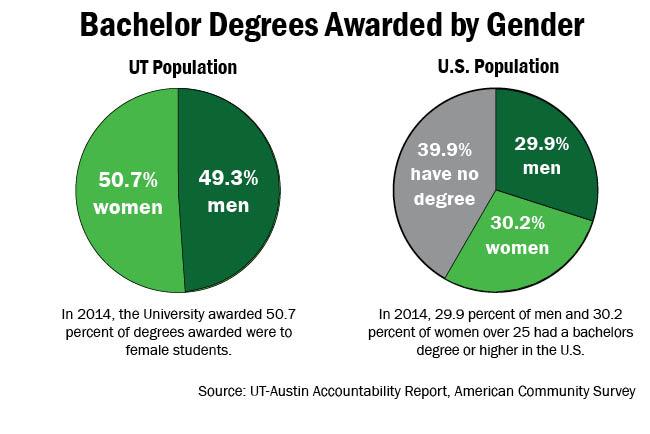A new report from the Pew Research Center reveals a significant shift in higher education trends, showing that U.S. women are now outpacing men in college completion rates across all major racial and ethnic groups. This milestone highlights ongoing changes in educational attainment and raises important questions about the future workforce and gender dynamics in the United States. The data underscores how women’s progress in obtaining college degrees is reshaping the landscape of opportunity and economic mobility nationwide.
U.S. Women Surpass Men in College Graduation Rates Across All Racial and Ethnic Groups
In a notable shift within higher education, women across the United States have outpaced men in earning college degrees, a pattern visible within every major racial and ethnic demographic. This trend reflects a broader transformation in educational attainment that spans across diverse communities, highlighting strides made in closing historical gaps in access and completion rates. Women of all racial and ethnic backgrounds‚ÄĒincluding White, Black, Hispanic, Asian, and Native American groups‚ÄĒhave demonstrated higher graduation rates, signaling a significant realignment in academic achievement nationwide.
The data further reveals several important factors contributing to this phenomenon:
- Increased enrollment: Women continue to enroll in college at higher rates than men, expanding their opportunities for degree completion.
- Support programs: Targeted initiatives have helped boost retention and graduation rates among women from underrepresented groups.
- Changing workforce demands: The rising importance of a college degree in the labor market has further motivated female students to complete their studies.
| Racial/Ethnic Group | Women’s Graduation Rate | Men’s Graduation Rate |
|---|---|---|
| White | 62% | 54% |
| Black | 56% | 48% |
| Hispanic | 58% | 50% |
| Asian | 70% | 65% |
| Native American | 51% | 44% |
Key Factors Driving the Gender Gap in Higher Education Completion
Several societal and economic dynamics contribute significantly to the widening educational attainment gap between women and men. Among these, changing labor market demands play a crucial role. Careers typically associated with women have expanded and evolved to require higher education credentials, particularly in fields like health care, education, and social services. Simultaneously, men are increasingly concentrated in industries where a college degree is less essential for entry or advancement, such as certain trades or manufacturing sectors.
Additional influencing factors include:
- Support systems: Female students often benefit from stronger academic and social support networks both in and outside of school.
- Motivational dynamics: Women demonstrate higher motivation for educational attainment, partially driven by long-term employment goals.
- Educational engagement: Girls tend to perform better on average in K-12 settings, building a foundation for college success.
- Policy influences: Programs targeting female education access and retention have increased over recent decades.
| Factor | Impact on Gender Gap | Example |
|---|---|---|
| Labor Market Shifts | Women pursue more college-required careers | Health care roles rising |
| Academic Support | Women have stronger engagement structures | Tutoring and mentorship programs |
| Motivational Patterns | Higher female educational aspirations | Greater college enrollment goals |
Implications for Workforce Diversity and Economic Opportunities
The rising tide of women achieving higher education across all racial and ethnic groups marks a critical shift that promises to reshape the U.S. labor market. Employers are increasingly recognizing the value of diverse perspectives, and the growing pool of college-educated women is expanding the talent pipeline in fields traditionally dominated by men. This shift could enhance innovation and problem-solving within organizations, fostering environments where diverse experiences converge to drive economic growth.
However, these changes also underscore persistent challenges that must be addressed to fully realize the benefits of this demographic evolution. Key considerations include:
- Pay Equity: Ensuring that women’s increasing educational attainment translates into equitable wages across sectors.
- Career Advancement: Breaking through glass ceilings in leadership roles remains a central hurdle.
- Industry Representation: Encouraging women’s participation in high-growth and emerging industries like STEM and finance.
| Metric | Men (All groups) | Women (All groups) |
|---|---|---|
| College Completion Rate | 42% | 58% |
| Representation in Management | 60% | 40% |
| Median Earnings | $55,000 | $48,000 |
Tapping into this diverse talent pipeline could significantly boost economic opportunities for families and communities, particularly those historically underrepresented in higher education. Strategic policy interventions and corporate initiatives designed to support retention, mentorship, and equitable promotion could amplify the impact of this educational milestone on workforce diversity and economic mobility nationwide.
Policy Recommendations to Address Gender Disparities in Postsecondary Attainment
Policymakers must intensify efforts to bridge the emerging gender gaps in postsecondary education by implementing targeted interventions that support men’s academic progress without diminishing the strides women have achieved. Essential strategies include:
- Enhancing male engagement: Development of mentoring programs and extracurricular activities tailored to male students, especially in communities with lower college completion rates.
- Addressing socioeconomic barriers: Increased financial aid and scholarship opportunities aimed at underrepresented men, including those from minority backgrounds.
- Promoting STEM inclusion: Encouraging men to pursue diverse fields traditionally dominated by women, such as healthcare and education, to foster gender-balanced workforce representation.
Meanwhile, equitable policies should also safeguard the continued progress of women by sustaining funding for initiatives that bolster female enrollment and completion. The following table highlights a conceptual framework illustrating resource allocation aimed at balancing gender disparities effectively:
| Policy Area | Target Group | Key Initiative |
|---|---|---|
| Financial Support | Men & Women | Need-based scholarships and grants |
| Academic Mentorship | Men | Male mentoring and role model programs |
| Field Diversification | Both Genders | Cross-gender STEM and vocational initiatives |
Future Outlook
As the data from Pew Research Center clearly show, U.S. women are not only closing the gender gap in higher education but surpassing men across all major racial and ethnic groups. This shift carries significant implications for the nation’s workforce, economy, and social dynamics. Monitoring these trends will be essential for policymakers and educators aiming to address the evolving needs and challenges facing students today.




